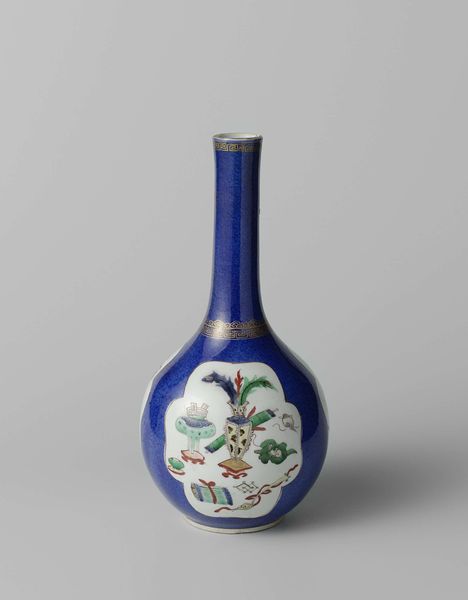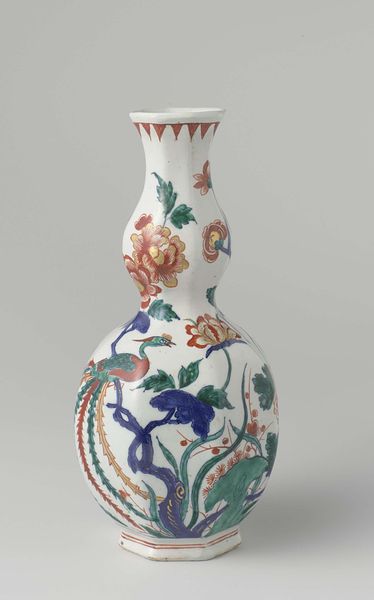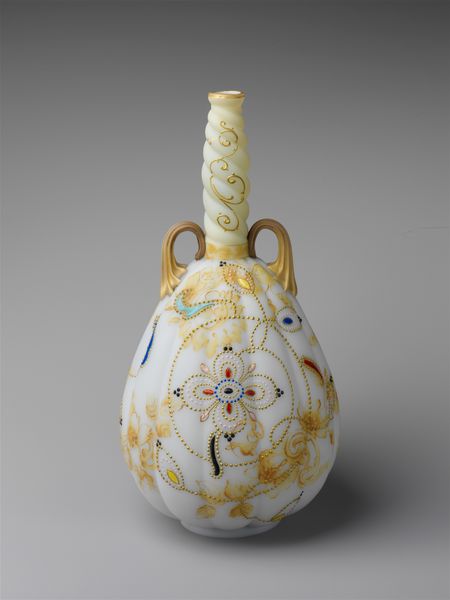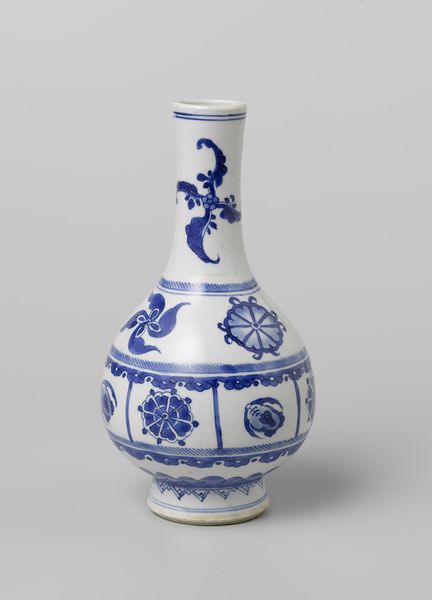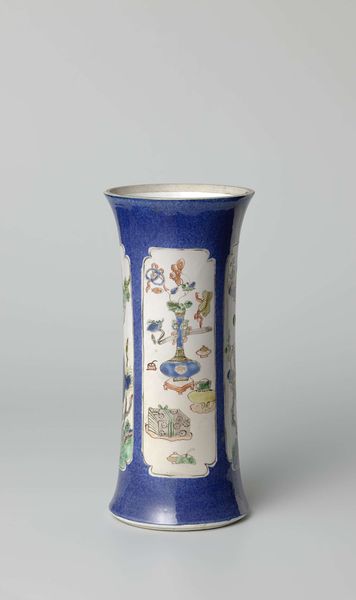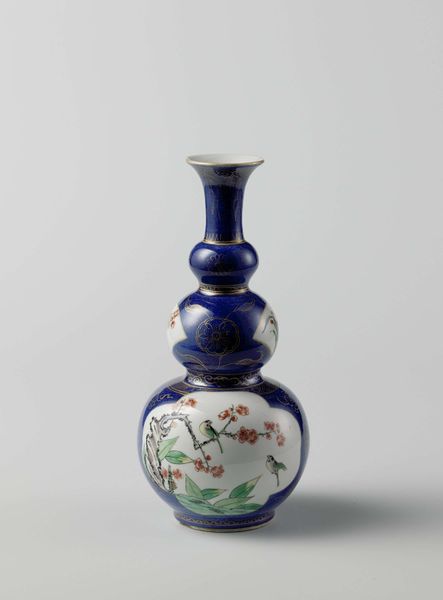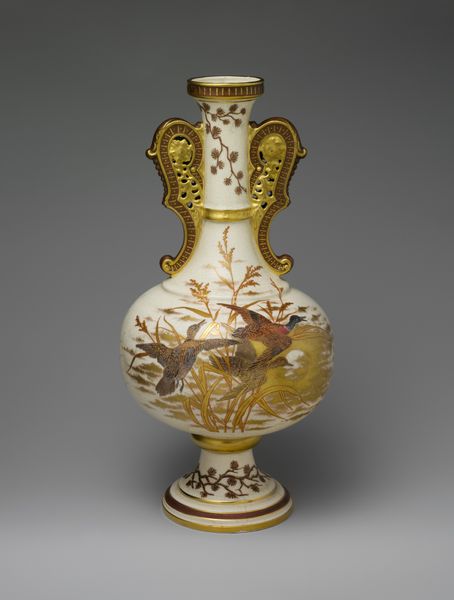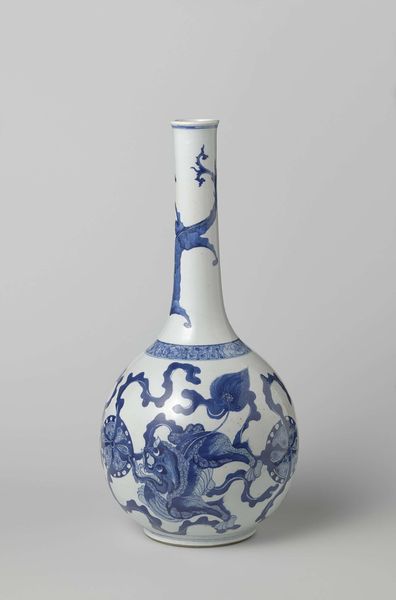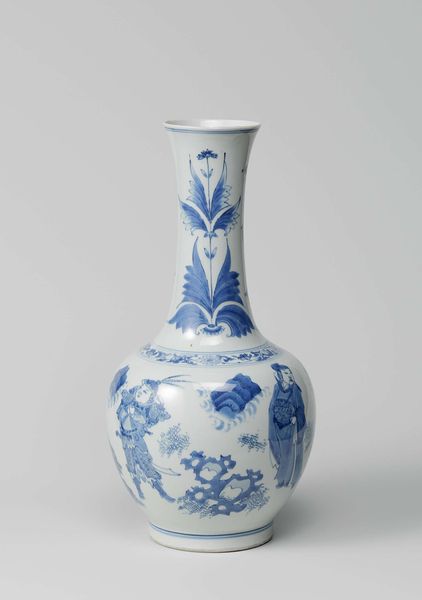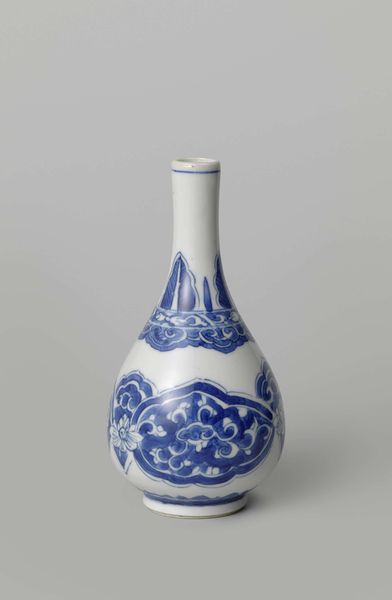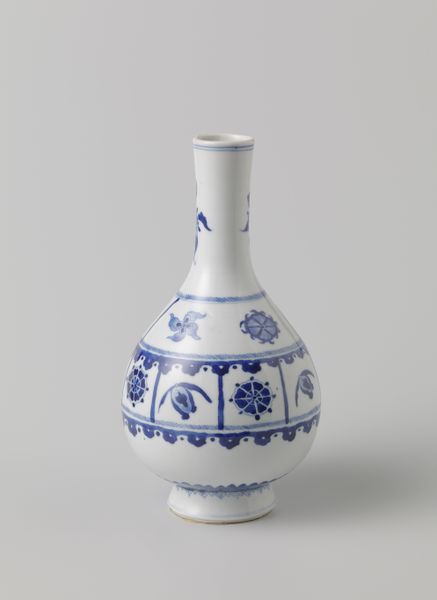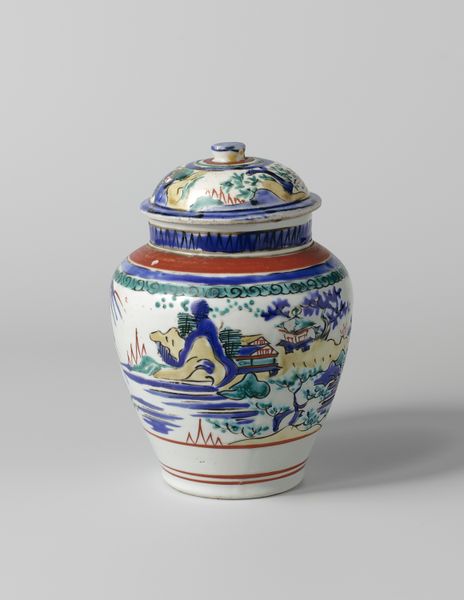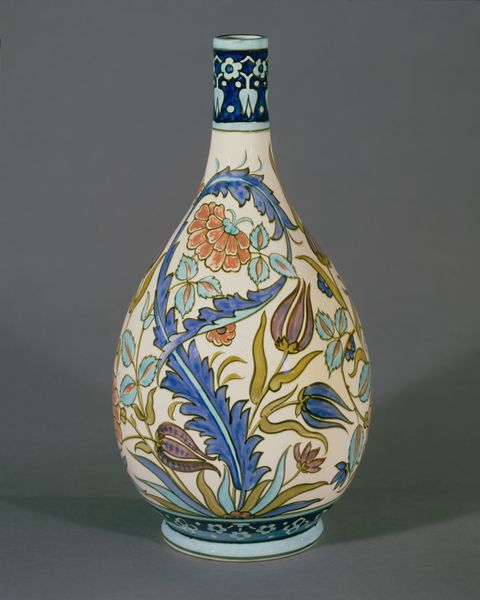
ceramic, earthenware
#
asian-art
#
ceramic
#
earthenware
Dimensions: height 24.5 cm, diameter 2.3 cm, diameter 14 cm, diameter 7.6 cm
Copyright: Rijks Museum: Open Domain
Curator: Let's turn our attention to this ceramic bottle vase, made around 1700-1724. It's currently held at the Rijksmuseum. Editor: My first thought is how striking the cobalt blue is against the stark white ground of the earthenware. It gives it a cool, almost wintry feel, even with the floral details. Curator: It does invite that association, particularly as the decoration features the ‘three friends of winter’: pine, plum blossom, and bamboo. It's fascinating how those elements are painted onto this form, isn't it? We’re seeing a real confluence of cultural exchange here. The vase was made, very likely for export, in Asia but its form clearly imitates European glass bottle shapes. Editor: You're right, those specific plants must carry symbolic weight. Each represents resilience and endurance during harsh conditions. The plum blossom for its early flowering, the pine for its evergreen nature, and bamboo for its flexibility and strength. Curator: And the artistry in rendering them! Look at the varied brushstrokes and colors. The copper-red is especially interesting since that palette, made through overglaze enamel, was quite technically challenging to execute at the time. One miscalculation during the firing and you could end up with a ruined piece, an economic and labor intensive issue. Editor: Indeed, even the placement seems carefully considered, a rhythmic dance of these symbols around the body of the vase. This rhythm evokes a sense of balance and harmony. Are there further seasonal symbols depicted? Curator: It appears so. Near the mouth of the vase we also see a pomegranate, which likely would have signaled fertility and abundance. Together these emblems reflect a desire for auspiciousness across the seasons. The vase speaks of enduring strength and the constant renewal of life. Editor: That melding of the hardiness and the hopeful makes for a truly compelling artifact, speaking both to its original crafting but moreover about universal human values we recognize today. Curator: I agree, analyzing its imagery provides a deep connection to a shared past—of resilience, continuity and artistic practice—despite the passing centuries.
Comments
No comments
Be the first to comment and join the conversation on the ultimate creative platform.
